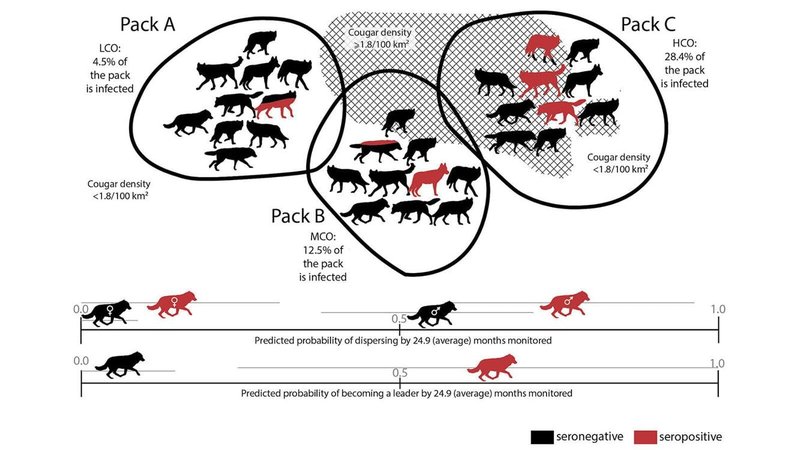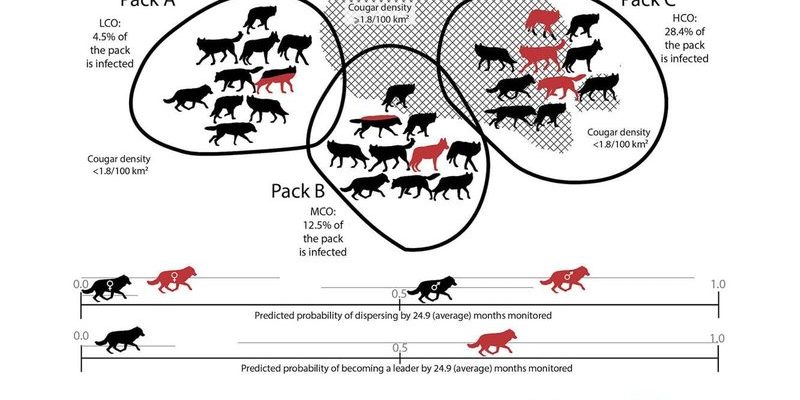
So, let’s dive into this intriguing topic. We’ll explore how wolf worms impact rodent populations and what that means for the environment. It’s a ride through the underbelly of nature—one that reveals the complex relationships between species.
What Are Wolf Worms?
Wolf worms, also known as larval botflies or *Cuterebra*, are parasites that typically infest small mammals, particularly rodents like mice and squirrels. Picture a tiny, soft-bodied worm making its home inside its host, feeding off nutrients and growing until it’s ready to emerge. This process is a bit like a twisted version of a home makeover, except the homeowners (the rodents) don’t exactly benefit from the renovations.
These parasites are fascinating because they have a specific life cycle that involves laying eggs in environments where rodents are likely to pass by. Once the eggs hatch, the larvae latch onto the host and burrow into its skin, where they can live for several weeks. It’s a clever survival strategy that allows wolf worms to thrive without being easily detected.
The Lifecycle of Wolf Worms
Let’s break down the lifecycle of wolf worms—it’s a wild journey! First, an adult botfly lays its eggs near rodent burrows or on blades of grass. When a rodent brushes past, the heat from its body triggers the eggs to hatch. Suddenly, those little larvae are ready to find their new home!
Once they attach to the rodent, they burrow into the skin, creating a fluid-filled cyst. This is where they live and grow, feeding on the rodent’s nutrients. You might think this is a pretty cushy life for the worm, but it can cause serious health issues for the rodent. The presence of the larvae can lead to infections and sometimes even death.
Eventually, after several weeks, the wolf worm is ready to pupate. It emerges from the rodent (often leading to the rodent’s decline) and drops to the ground, where it turns into a pupa. The cycle starts all over again when the adult botfly emerges and lays more eggs.
How Wolf Worms Affect Rodent Populations
Now, you might be wondering why understanding wolf worms is important for rodent populations. Here’s the thing: wolf worms can significantly impact the health and size of these populations. When a large number of rodent hosts succumb to the infestation, it can lead to a decline in the local rodent population. This can have a ripple effect on the ecosystem.
Healthy rodent populations are crucial because they serve as prey for many predators, including birds of prey, foxes, and, yes, wolves. If wolf worms significantly reduce the number of available rodents, it can lead to food shortages for these predators. It’s a delicate balance, and when one species is affected, many others feel the consequences.
Additionally, the presence of wolf worms can also influence how rodents behave. For example, if they sense a potential infection, they may alter their foraging habits, spending less time in areas where they might be vulnerable to infestation. This could change their reproduction rates and overall population dynamics.
Ecological Importance of Rodent Populations
So why should we care about rodent populations and their interaction with wolf worms? Simply put, rodents play a key role in our ecosystems. They’re not just cute little creatures; they help with seed dispersal, which supports plant growth. They also aerate the soil as they dig their burrows, promoting healthy soil conditions.
When rodent populations fluctuate due to parasites like wolf worms, it can lead to broader ecological impacts. For instance, fewer rodents could mean reduced plant diversity, which might affect insects and birds that rely on those plants. It’s like a chain reaction—every species is connected in some way.
Moreover, studying these interactions sheds light on the health of ecosystems as a whole. By examining how wolf worms affect rodent population dynamics, researchers can gain insights into environmental changes, habitat destruction, and the overall balance of nature.
Managing Wolf Worm Infestations
You might be thinking, “Is there a way to help those poor rodents?” Managing wolf worm infestations can be challenging, but there are steps that can be taken. First and foremost, habitat management is crucial. Keeping environments clean and preventing overcrowding in rodent burrows can help reduce the chances of infestations.
In some areas, monitoring rodent populations can also provide valuable data. If researchers notice a significant decline, they can investigate further to understand the impact of wolf worms or other environmental stressors. This kind of proactive management can help maintain healthy rodent populations and, in turn, the predators that rely on them.
However, while humans can try to manage these populations, it’s important to remember that nature has its own way of maintaining balance. Sometimes, a decline in rodent populations due to wolf worms can be a natural part of the ecosystem’s dynamics.
Future Research Directions
As we learn more about wolf worms and their impact on rodent populations, future research will likely focus on a few key areas. One area of interest is understanding the climate factors that may influence the prevalence of wolf worms. For example, warmer temperatures could lead to more successful infestations.
Another exciting direction is the potential for ecological restoration. By restoring habitats that support healthy rodent populations, researchers hope to create environments where both rodents and their natural enemies can coexist without the detrimental effects of parasitism. This kind of restoration is vital not just for rodents but for the entire ecosystem.
Finally, ongoing studies could explore the genetic factors that make some rodents more susceptible to wolf worm infestations than others. This knowledge could inform conservation strategies and help maintain the delicate balance of nature.
In summary, wolf worms and rodent population dynamics present a captivating look at the interconnectedness of nature. These tiny parasites might seem insignificant, but their impact on rodent populations is anything but! They highlight the delicate balance in ecosystems, reminding us that every species—big or small—plays a role.
As we continue to explore these relationships, we gain a better understanding of how to manage wildlife and maintain healthy ecosystems. So next time you see a little rodent scurrying by, remember the hidden challenges it might be facing beneath the surface. After all, nature is continually weaving its intricate web, connecting us all in ways we may not even realize.

